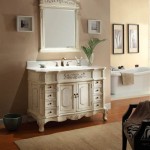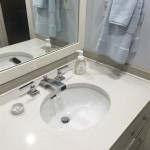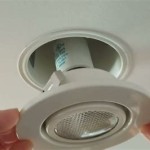What Plants Can You Put In A Bathroom With No Windows and Doors?
Introducing greenery into interior spaces enhances aesthetics, improves air quality, and creates a more relaxing environment. However, introducing plants into a bathroom lacking natural light and ventilation, particularly one without windows and doors for consistent airflow, presents a unique challenge. Many plants thrive on sunlight and regular air circulation, making the selection process crucial for the plant's survival. Knowing which species are tolerant of low-light conditions and high humidity is essential for successfully integrating plants into such an environment.
When considering plants for a windowless and doorless bathroom, it's important to acknowledge that "no light" isn't entirely accurate. There will likely be some artificial light from the bathroom’s lighting fixture. The key is to choose plants that require minimal light and can tolerate the often-fluctuating humidity levels inherent in bathroom environments. Furthermore, the absence of a door significantly impacts humidity levels as moisture doesn't get trapped, potentially making the environment less humid than a typical closed-door bathroom. This influences the type of plants that can survive.
The following information details various plant species that can potentially thrive in a windowless and doorless bathroom, offering guidance on their care requirements and highlighting specific adaptations that enable them to survive in such conditions. It is crucial to monitor the plants closely for signs of stress, such as yellowing leaves, stunted growth, or root rot, and to adjust care practices accordingly.
Selecting Low-Light Tolerant Plants
The most critical factor in choosing plants for a windowless and doorless bathroom is selecting species known for their ability to survive in low-light conditions. While no plant can truly thrive without any light, some species are significantly more tolerant than others. These plants have evolved mechanisms to photosynthesize efficiently, even with minimal light exposure. This includes having larger leaves to maximize light capture or utilizing different photosynthetic pathways that are more efficient in low-light conditions.
Several plants are particularly well-suited for these challenging environments. These include:
Snake Plant (Sansevieria trifasciata): This plant is renowned for its resilience and ability to tolerate neglect. Snake plants thrive in low-light conditions and require minimal watering, making them exceptionally well-suited for a bathroom environment. They are also known for their air-purifying properties, removing toxins such as formaldehyde and benzene from the air. The lack of a door can be beneficial to snake plants, as excessive humidity can lead to root rot.
ZZ Plant (Zamioculcas zamiifolia): Similar to the snake plant, the ZZ plant is another remarkably hardy species that can withstand low-light and infrequent watering. It possesses rhizomes that store water, allowing it to tolerate drought conditions easily. The ZZ plant is also known for its air-purifying capabilities. In a bathroom without a door, ensure proper drainage in the pot to avoid overwatering, as constant moisture can negatively impact the plant's health.
Cast Iron Plant (Aspidistra elatior): As the name implies, the cast iron plant is incredibly resilient and can tolerate a wide range of adverse conditions, including low light, infrequent watering, and temperature fluctuations. It's an excellent choice for beginners and can withstand neglect better than most other houseplants. Given the open environment of a doorless bathroom, the cast iron plant's drought tolerance is a significant advantage.
Pothos (Epipremnum aureum): While Pothos prefers bright, indirect light, it can adapt to lower light conditions. The key is to avoid overwatering, as they are susceptible to root rot if kept constantly moist. The trailing vines of pothos can add a decorative touch to the bathroom. Be mindful that in a doorless bathroom, monitoring soil moisture is crucial to ensure the Pothos isn't drying out too quickly.
Peace Lily (Spathiphyllum): While Peace Lilies prefer bright indirect light, they can tolerate lower light levels. However, their flowering may be less frequent or non-existent in very low light. They are relatively sensitive to overwatering, so allow the soil to dry out slightly between waterings. Peace lilies can also help filter certain air pollutants, making them a beneficial addition to the bathroom. The stability in humidity provided by a consistently ventilated, doorless bathroom can be advantageous if the plant's watering needs are carefully managed. However, a high lack of humidity might require some supplemental moisture.
Managing Humidity and Watering
Although many bathrooms are humid environments, a bathroom without a door may have lower humidity levels than those with doors. This is because the moisture from showers and baths dissipates more quickly into the surrounding rooms. Careful consideration must be given to watering schedules because plants in these environments might dry out faster leading to under watering, or if humidity is trapped you might overwater the plant.
Understanding the individual plant's water requirements is essential. Overwatering is a common mistake that can lead to root rot, especially in low-light conditions. Allow the soil to dry out slightly between waterings, and ensure the pot has adequate drainage.
To determine if a plant needs watering, insert a finger into the soil to a depth of about an inch. If the soil feels dry to the touch, it’s time to water. When watering, saturate the soil until water drains from the bottom of the pot. Avoid letting the plant sit in standing water, as this can lead to root rot. The lack of a door can reduce humidity, potentially requiring more frequent watering than in a typical bathroom. However, consistent monitoring of soil moisture is vital.
If the humidity is consistently low, consider grouping plants together to create a microclimate of higher humidity. Plants naturally release moisture through transpiration, and when grouped together, this collective transpiration can increase the surrounding humidity. Placing a tray of pebbles filled with water near the plants can also help increase humidity through evaporation.
For the Peace Lily, if browning leaf tips are observed, this typically indicates low humidity. Misting the leaves occasionally can help alleviate this issue. However, avoid excessive misting, as this can create conditions conducive to fungal growth. In a doorless bathroom, monitor the Peace Lily closely to determine the appropriate misting frequency.
Supplementing with Artificial Light and Nutrients
Even with low-light-tolerant plants, supplemental artificial lighting can significantly improve their health and longevity in a windowless bathroom. LED grow lights are an energy-efficient and effective option for providing plants with the light they need for photosynthesis. Choosing a full-spectrum LED grow light is ideal, as it emits a range of wavelengths that plants can utilize. These lights can be set on a timer to provide consistent light exposure, typically 12-14 hours per day, especially for plants that are less tolerant to very low light.
The distance between the light source and the plant is also crucial. Too much light can cause leaf burn, while too little light may not provide enough energy for photosynthesis. Start with the light positioned further away and gradually move it closer to the plant, while closely observing the plant for any signs of stress. Observe leaf color. If the leaves are very dark green, the plant may not be getting enough light. If they are pale or yellowing, the plant may be getting too much light or too much heat from the artificial light source.
In addition to light, plants also require nutrients to thrive. Since photosynthesis is limited in a windowless environment, nutrient uptake becomes even more important. Fertilize plants sparingly, as over-fertilizing can be more harmful than under-fertilizing, especially in low-light conditions. Use a balanced liquid fertilizer diluted to half strength and apply it during the growing season (spring and summer). Avoid fertilizing during the dormant season (fall and winter). Consider fertilising every few months to give your plant a healthy boost.
Regularly inspect the plants for signs of nutrient deficiencies, such as yellowing leaves, stunted growth, or unusual leaf patterns. These symptoms can indicate a need for specific nutrients. However, be cautious and consult with a knowledgeable source or conduct a soil test before making any adjustments to the fertilization schedule. Adjust fertilization in response to signs of need, as a balance must be struck between providing sufficient nutrients and avoiding over-fertilization in a low-light setting.
Rotating plants periodically can also ensure even light exposure and prevent one side of the plant from becoming etiolated (stretched and pale due to lack of light). A simple quarter turn every week or two can help promote even growth.
Ultimately, the success of growing plants in a windowless and doorless bathroom depends on careful selection, diligent care, and close observation. By understanding the specific needs of each plant species and adapting care practices accordingly, it is possible to create a thriving green oasis within this unique environment.

Top 15 Bathroom Plants For Your Home

A Guide To The Best Plants For Your Bathroom Collective Gen

The Best Bathroom Plants For No Light Or Low

5 Ideas To Open Up A Windowless Bathroom

What To Do If Your Bathroom Has No Windows Victoriaplum Com

Tips To Make Your Windowless Bathroom Bigger

30 Best Bathroom Plants Low Light High Humidity Plant Ideas

10 Creative Ideas To Make Your Windowless Bathroom Bright And Airy Grace In My Space

How To Brighten Up A Bathroom Without Windows By Mira Showers

See How I Styled My Shower Plants 7 Best For Your Bathroom
Related Posts







